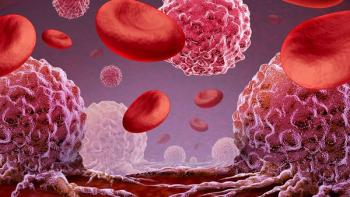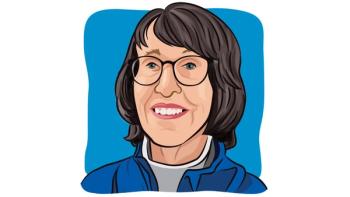
- Immunotherapy Special Issue
- Volume 1
- Issue 1
'A Cure Within'
Key Takeaways
- Immuno-oncology (IO) leverages the immune system to combat cancer, achieving unprecedented success in treating advanced malignancies.
- Historical attempts, like Coley's toxins and IL-2, laid the groundwork for modern IO advancements despite initial setbacks.
A new book delves into the stories of 25 immunotherapy pioneers and the history of the field they helped to develop.
NEIL CANAVAN, author of 'A Cure Within' Photo by NY HEADSHOTS
“IT WORKS WHERE NOTHING worked before.” That’s how Gordon Freeman, Ph.D., a researcher at Dana-Farber Cancer Institute in Boston, describes the action of novel drugs that help the human immune system fight cancer.
And yes, it’s true: With a little help from your doctor, your immune system may be able to mount an incredibly effective attack against cancer. This new modality of disease management is called immuno-oncology (IO), and to date, its success in treating patients with certain types of advanced cancer is without precedence. Although the strategy works for only about one-third of eligible patients across numerous cancer types, its effectiveness for that population — and ongoing research that could broaden the array and applicability of techniques — makes the field of IO a scientific and medical breakthrough that rivals the discovery of antibiotics.
But what is IO? In a book I recently published, I explain the technique through interviews with 25 of the pioneers of science who helped develop it.
A bit of history: In the late 1800s, a surgeon named William Coley read about a patient with cancer who, following a near-fatal postoperative infection, was completely cured of residual malignancy (a rare outcome). This story resonated with Coley because he had recently operated on a patient with a very similar cancer type who, after having no post-surgical complications at all, eventually died of cancer recurrence due to the residual tumor cells that the surgery failed to remove (a common outcome to this day).
Coley looked for other such cases in which infection had preceded spontaneous cancer regression. There were just a handful, but from those few reports, he gained a belief that infecting microbes somehow awakened a patient’s immune system to the presence of cancer. Based on this, he created his own brew of bugs, dubbed Coley’s toxins, to administer to patients with cancer.
However, despite some effectiveness, the toxins were difficult for doctors to replicate for use in their own patients, and it was anyone’s guess as to exactly how they worked. After a number of years and the advent of radiotherapy and then chemotherapy, Coley’s toxins fell out of favor, and the idea of leveraging the immune system to fight cancer was largely abandoned.
Fast-forward to the early 1980s and the observations of another gifted surgeon, Steve Rosenberg, M.D., Ph.D. During his training, Rosenberg also encountered a patient whose body had apparently cured its own cancer. This patient, whom Rosenberg was treating for an unrelated malady, had been seen in the same hospital years before to have metastatic stomach cancer removed. The surgeon of record wrote that, despite his best efforts, many tumors remained inoperable, and he was sending the patient home to die. Yet, mysteriously, even years later, the patient was still alive.
Like Coley, Rosenberg looked for other cases of spontaneous remissions, and, like Coley, he found a few. By this time, a bit more was known about the immune system, enough to convince Rosenberg that (a) the patients’ own immune systems had fought off the cancer and (b) he should spend the rest of his career trying to figure out how it had happened and then use that knowledge to cure the disease.
Rosenberg’s years-long investigations eventually suggested that he treat patients with a natural immune stimulant called interleukin-2 (IL-2), and that tactic gave rise to a number of remarkable cures in patients with advanced cancer. The results were the stuff of headlines, and in 1985, Rosenberg, who is chief of the surgery branch at the National Cancer Institute’s Center for Cancer Research, wound up on the cover of Newsweek.
But again, the success was short-lived. IL-2 does not work as a monotherapy in most patients but is whoppingly toxic in all patients, so, again, the IO approach fell out of favor.
Then came “ipi.”
Discovered by an inquisitive Texan named James Allison, Ph.D., a researcher, professor and chair of immunology at the University of Texas MD Anderson Cancer Center in Houston, the drug Yervoy (ipilimumab) — nicknamed ipi and approved by the Food and Drug Administration in 2011 — could overcome certain limitations, or checkpoints, on the immune system, which the body uses to avoid a dangerous overreactive immune response. In overriding this failsafe with ipi, which is a checkpoint inhibitor, Allison found that immune cells once restrained from attacking cancer cells were suddenly and dramatically unleashed.
In the hands of pioneering physician Jedd Wolchok, who works at the same hospital Dr. Coley did — Memorial Sloan Kettering Cancer Center in New York City — patients with metastatic melanoma who were treated with ipi were living months, if not years, beyond their prognoses. Following this seminal discovery, checkpoint inhibitors that are more effective for some patients were found. These drugs are making headlines not only in melanoma but also in other dire tumor types, such as advanced lung and colon cancers.
Complete responses (meaning patients have no radiographic evidence of disease) are also being observed with an entirely different type of IO technology — cellular therapies, the so-called CAR-T cells that are being used to treat certain advanced leukemias and lymphomas. In this approach, pioneered by scientist/physician Michel Sadelain, M.D., Ph.D., and others, the patient’s own immune T cells are removed, genetically enhanced in a lab using a tumortargeting chimeric antigen receptor (CAR), multiplied into the billions, and then administered to the patient to seek and destroy tumor cells. As Sadelain, also of Sloan Kettering, puts it, “It’s the most complex drug ever assembled.” As with checkpoint inhibitors, CAR-T cell therapy has resulted in long-term remissions that have lasted years, many in children affected by once invariably fatal diseases.
So, yes, this is a medical revolution. In my 20-plus years of reporting on drug development, I have never seen anything like it. This is not a single new blockbuster drug or a new class of drugs; this is a new way of looking at and thinking about how to help patients help themselves.
Based entirely on interviews, A Cure Within: Scientists Unleashing the Immune System to Kill Cancer tells the story of immuno-oncology in the words of the investigators who developed it. It is the story of great success and crushing failure — of toil, resurrection and, finally, the redemption of a groundbreaking, bar-raising, mind-blowing idea: that the human immune system is capable of recognizing, attacking and eradicating cancer. Written by Neil Canavan, A Cure Within is published by Cold Spring Harbor Laboratory Press and available on Amazon.
Articles in this issue
over 7 years ago
Intercepting the Playover 7 years ago
It Takes Twoover 7 years ago
Plural Immunotherapyover 7 years ago
Gut Reactionover 7 years ago
New Therapies Are Gathering Speedover 7 years ago
Contagious Enthusiasmover 7 years ago
The Jury Is Outover 7 years ago
Under New Management




